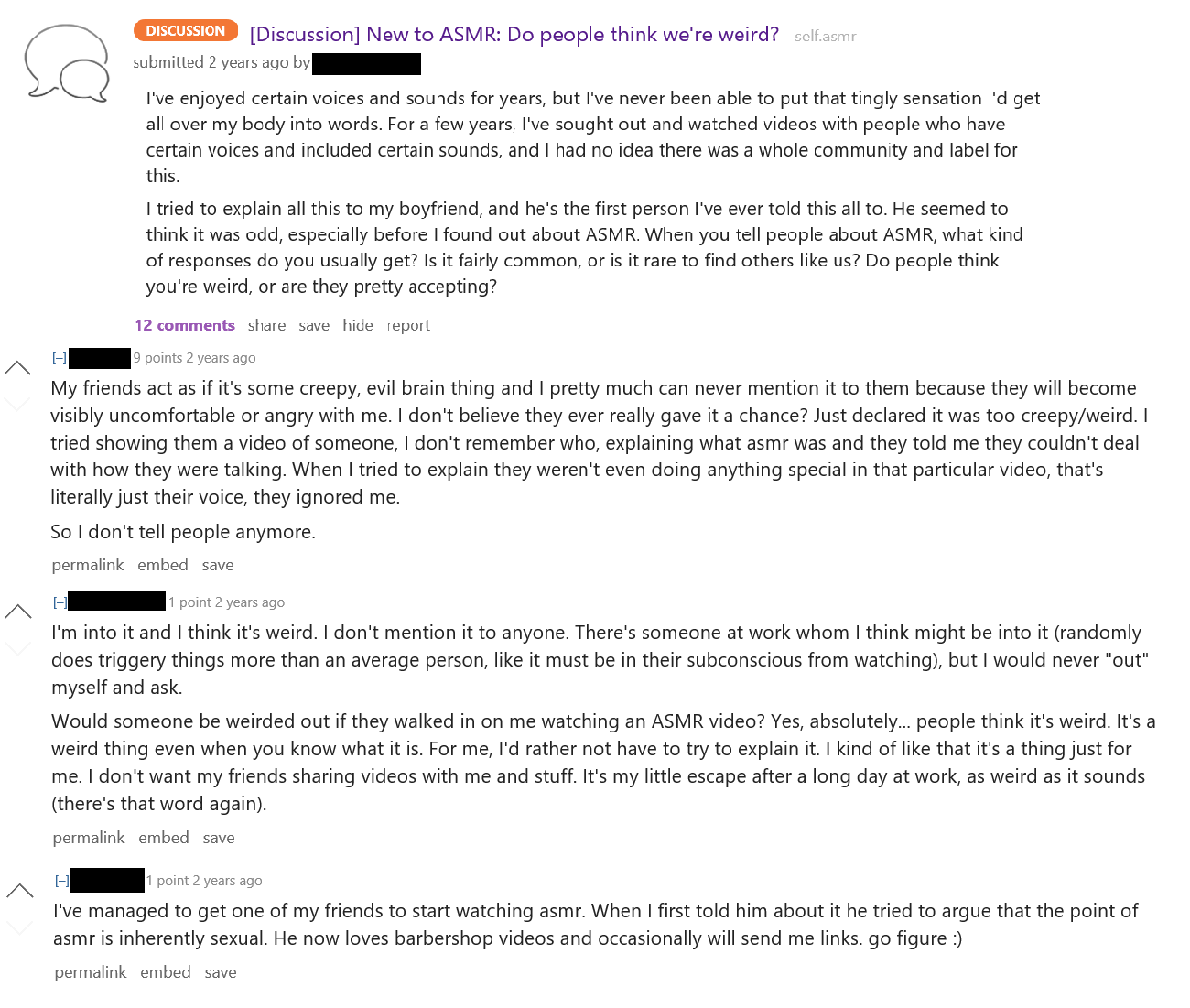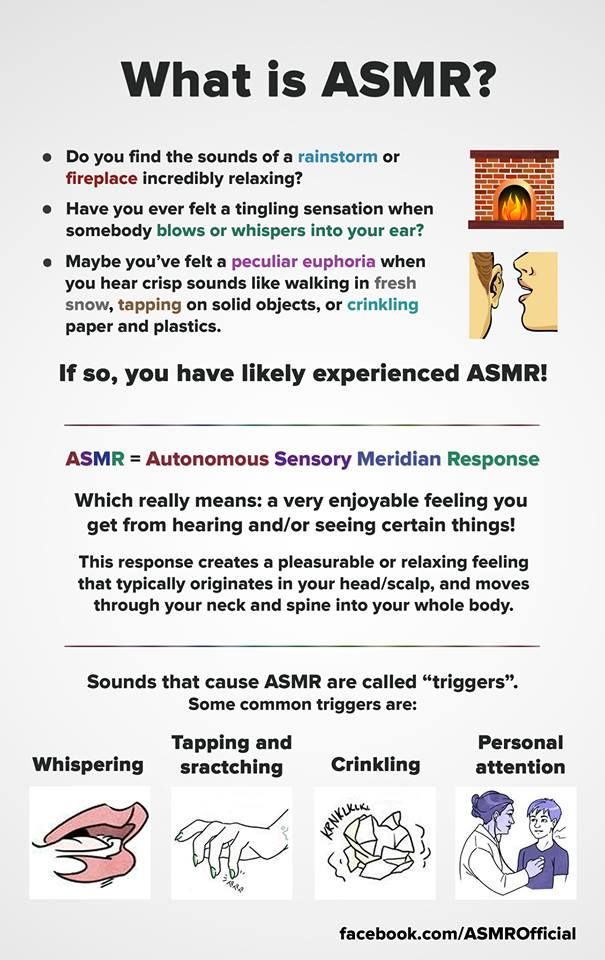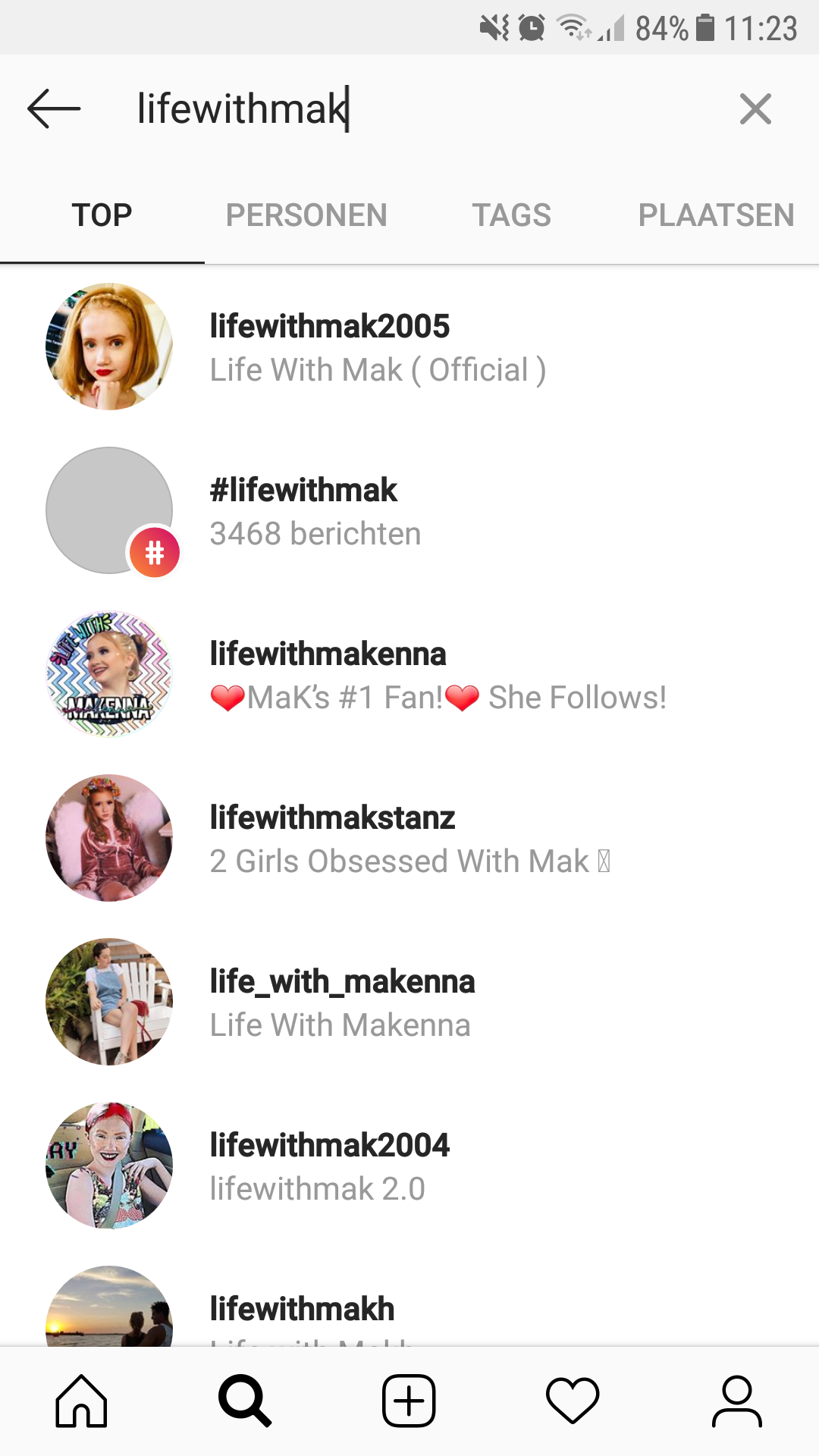
Autonomous Sensory Meridian Response and the Rise of the ASMR community
ASMR, Autonomous Sensory Meridian Response, a phenomenon hidden in a quiet corner of YouTube. What is it? And how is this previously unknown community now so visible in the mainstream?
What is ASMR?
At this point, it is safe to say that people who spend quite a lot of time on the internet will have heard of the term ASMR. Before we delve into this quiet world, we must first know what the term stands for.
According to the top definition of Urban Dictionary, Autonomous Sensory Meridian Response (ASMR) is “to relax people (…), ASMR videos are meant to give the viewer a relaxing tingle at the back of their head and/or spine (Urban Dictionary, 2012)." People who experience ASMR, describe the feeling they get as “tingles”, “head orgasms”, or “chills”. These tingles are activated by so-called “triggers”: soft whispering, mouth sounds, soothing noises like tapping, scratching and hand sounds, brushing, tracing, and so on. A different, yet less popular kind of ASMR is not about the sounds, but about visuals and/or role plays.
Triggers do not only come about in online videos. People also experience tingles in offline circumstances. For example, when someone is unknowingly tapping on a table, brushing their hair, or turning pages of a book. Remember the feeling when you were young and your mother would comb through your hair or when you would watch a Bob Ross painting video, then you were likely getting ASMR.
ASMR – the tingling feeling that can form on the scalp and
emanate down the body in response to certain stimuli
People in the ASMR community usually watch videos for the purpose of falling asleep or getting relaxed. This is also one of the reasons why it is becoming more popular. People are claiming that it even helps with reducing anxiety problems, panic attacks, and/or depression (Richard, n.d.).
There are multiple videos on YouTube from creators of ASMR who try to explain what the term implies, including ASMR Darling, MassageASMR, the Dutch beauty blogger Mascha, and Gentle Whispering ASMR, who can be seen on the YouTube video below.
Even though the ASMR community is growing and getting more accepted, it is often still seen as weird or even sexual. But why is this group of people seen as outsiders and characterized by deviance?
#tinglecommunity
The ASMR community, which also goes by the name of 'tingle community', is a primarily online based group. We can look upon this group as being a community, because the people who are involved with ASMR really see themselves as members of this community.
There are some places in an offline context that are specifically dedicated to ASMR, although it is very rare to come into contact with the phenomenon in real life. One example of ASMR in an offline context is the ASMR Massage London which features in a video of WhispersRed ASMR.
Because ASMR is a group that originated and keeps growing online, we can look at it as an imagined community (Benedict Anderson, 1983). An imagined community is a socially constructed community, imagined by the people who perceive themselves as part of that group. The community is imagined in the sense that most members will never know most of their fellow members, meet them or even hear them. Yet, in the minds of each lives the image of their communion.
This easily applies to the tingle community, as their members know and interact with each other on an online basis. And online, the community is so large that there is little chance one member will ever talk to all other members. There is an even smaller chance of meeting some of their fellow members in real life, but they do identify with each other and consider themselves as part of the group.
Figure 1 Reddit
People who watch ASMR are often part of such an online imagined community, because they know this is where they will be accepted. Based on my own exoperience, I can say that in real life, people often react as if ASMR is the weirdest thing they have ever heard of.
Thomas Hylland Eriksen (2007, p. 8) argues that “the internet is fast becoming a major medium for the (…) strengthening and definition of collective identities, especially in the absence of a firm territorial and institutional base." The ASMR community has, as stated before, no strong offline territorial basis apart from the few ASMR spas around the world. And so the chance people have to get into offline interaction with other members of the ASMR community is small. People, therefore, feel the need to communicate with each other through online platforms, like YouTube or Reddit. Talking about how they are perceived by the mainstream (the people who do not watch ASMR) and speaking about their common interest in ASMR.
One conversation I found during my fieldwork on Reddit (see figure 1 above) is about someone who is not sure what to think about the phenomenon and is trying to be accepted by the mainstream and by the outsiders.
In sum, people who are in the tingle community themselves are totally open about it towards other members, but are often cautious with telling it to “outsiders” of the ASMR community.
Before delving into why ASMR is often found weird, sexual, and cringy in the next section, we must first examine the concepts of mainstream and deviance. Howard S. Becker (1963, p. 8) argues that “A society has many groups, each with its own sets of rules, and people belong to many groups simultaneously. A person may break the rules of one group by the very act of abiding by the rules of another group.” You are part of a group if your behavior conforms to the rules and is perceived by peers as conforming to the rules.
Deviant groups are not following these conventional norms and rules. But deviance is not a quality of the act the person commits, the deviant is the one to whom that label has successfully been applied. Thus, whether an act or person is deviant, depends on how other people react to it (Becker, 1963).
Weird, sexual, and cringy?
As stated before, people who are not familiar with ASMR are often weirded out by it. Most often, they actually have no idea what ASMR entails. For those who are still in the blue about what ASMR is, have a look at figure 2 below.
Figure 2 What is ASMR?
Apart from people finding ASMR weird, it is also commonly associated with sexual behavior. “Brain orgasm" or "head orgasm” are terms that are typically used to describe the tingly feeling you get when watching ASMR and the fact that most of the content creators are attractive young women whispering closely to a microphone, makes for the fact that people often see it as something sexual. In China it went as far as the government banning all ASMR content, with regard to the anti-pornography laws. They stated that this would “protect minors from harmful content” (Ferguson, 2018).
The hundreds of ASMRtists on YouTube argue that there is nothing sexual about it and that the sounds + whispering is purely intended to give their viewers “tingles”. This does not do away with the fact that some youtubers are affected by these sexual claims. I have been watching fastASMR, who was mentioned before, for years now. But it was not until recently that she dared to show her face on camera, scared for people in her real life to recognize and judge her, especially because of her work with kids.
Anything that differs
from what is most common,
can be seen as deviant
Because the majority of people does not know what ASMR exactly implies and are therefore not accepting of it, we can state that the ASMR community is a deviant group. They are seen as outsiders. Howard S. Becker (1963, p. 4) claims that “one can describe anything that differs from what is most common as a deviation." Deviance is not a quality of the act the person commits, the deviant is the one to whom that label has successfully been applied. This is of complete relevance in the ASMR community, which is seen as deviant and not common by the mainstream and seen as normal within the community itself.
ASMR and the community that belongs to it, are thus not commonly accepted by the members of the mainstream. And although it has always been found weird or cringy by a lot of people, in the last few years there have been more and more content creators and watchers. We will see why and how, under the heading "The biggest trend you never heard of".
ASMRtists
ASMRtists are the people who create content for others to relax to or to fall asleep to. Clareee ASMR, fastASMR, DennisASMR, and TiaraASMR are only a few examples of these micro-celebrities within the ASMR-community. The latter is a Dutch girl, whose subscribers are primarily Dutch. Thus, we can see the phenomenon of local vs. global also appearing in the world of ASMR. fastASMR is an example of a creator of global content by speaking English in most of her videos, but she is trying to reach her local fanbase in Germany too, by recording some videos in German.
With this example we can also stress the layered and polycentric nature of this group. Some of the celebs operate on a global scale, use English and are followed by people all over the world. Others, like TiaraASMR, operate on a national scale, use a local language, and are therefore mainly viewed by national audiences. The ASMR community is therefore not a homogenous globalized subculture. It is a polycentric, layered, and translocal phenomenon. Some creators work on a global level, others one more local levels (Maly & Varis, 2016).
One ASMRtist whose channel has recently exploded is LifeWithMak. The 13-year-old Makenna Kelly had a small amount of subscribers before uploading her honeycomb eating video. A few days later she had over 600.000 subscribers, and this number has only grown since then to a now whopping 1.200.000. The young girl has, since then, fed her fanbase with “sassy” roleplays, eating videos (Mukbangs) and collaborations with other young youtubers. She got so famous, that fans started to create fan pages and memes on Instagram, as can be seen on figure 3 below.
Figure 3 LifeWithMak fanpages
After describing this example of how much of an impact an ASMRtist can have on her subscribers, we can conclude that ASMRtists can be seen as micro-celebrities. Danah Boyd (2014, p. 123) argues that “Based on their understanding of the social situation – including the context and the audience – people make decisions about what to share in order to act appropriately for the situation."
We can associate this with the role ASMRtists play in their videos and content. They only share a particular amount of information about themselves, in order to get the most out of the purpose of their content. They manage their identity, for a certain diverse audience, to make as good as an impression as possible. Although ASMRtists, and basically everyone else, tries to be perceived in the best light, a lot of the time content is taken out of its context, boyd (2014) argues.
We can see this by looking at the memes which are based on the videos LifeWithMak created. Most of the time a meme has nothing to do with the context the content is made in, but people still seem to love them.
ASMRtists are, thus, the bedrock for the ASMR community. They ignore the mainstream speaking about how ASMR is weird and not normal, and try their best to give people some relaxation and even help them with their anxiety or depression. ASMRtists can therefore be understood as crusaders (Becker, 1963). They typically want to help those beneath them (the viewers) to achieve a better status. In this case, the crusaders try to make ASMR more acceptable by talking about it - and participating in ASMR openly.
The biggest trend you never heard of
Since 2010, when the term ASMR was first used by Jennifer Allen, this digital niche has grown immensely. Especially since the last years, as can be seen below on figure 4 of Google Trends. Just like other subcultures, like hipsters, the Pro-Ana community, and fanbases, the ASMR community was able to grow because more and more people shared their interest in ASMR via internet infrastructures (Maly & Varis, 2016).
google trends asmr.PNG
Figure 4 Google Trends ASMR
As we saw before, there are also ASMR communities on a more local level, mainly because of linguistic differences. But the truly global elements of the tingle community are circulated by large infrastructures like Reddit and YouTube. Another factor is that there are more and more content creators of ASMR active on YouTube and with that comes the simultaneous growth of the viewer base.
In this way ASMR has slowly found its way from a subgroup that was seen as complete outsiders, to a more accepted place in the mainstream. We can see this for example by brands that are using ASMR to connect with their consumers. As ASMR is associated with comfort and relaxation, companies can really benefit from practicing ASMR. IKEA has made an ASMR video about bedroom furniture, but Dove and KFC are also using ASMR to engage with their consumers.
W Magazine is working together with many celebrities to bring ASMR into the mainstream. Their YouTube channel has a special playlist for ASMR videos alone. People like Cara Delevingne, Margot Robbie, and Cardi B talk about themselves while in the process making triggers sounds with an assortment of things.
Outsiders or mainstream?
All of this makes clear that ASMR is moving from being a deviant group to 'the mainstream'. As we have seen, there is still a huge amount of people that are criticizing ASMR for being weird and sexual. And even though some ASMRtists are affected by this, most of them ignore this judgement and go on with creating content to help others relax and fall asleep. This is also the main reason that ASMR itself is growing. The content creators of ASMR are the ones who make sure that there is no lack of videos for the continuously growing viewer base. The ASMR community is growing, and companies are playing in on this by providing commercials or advertisements which include triggers.
By seeing that the ASMR community is growing and that even brands are engaging in the phenomenon, we can conclude that ASMR really is moving from the margins to the mainstream. The ASMR community is rising and will (hopefully) do so for a long time.
References
Anderson, B. (1983). Imagined Communities. London, United Kingdom: VERSO.
Becker, H. (1963). Outsiders. Studies in the Sociology of Deviance. New York, United States: THE FREE PRESS.
Boyd, D. (2014). Impression Management in a Networked Setting. In It's Complicated (pp. 47-53). New Haven: Yale University Press.
Eriksen, T.H. (2007). Nationalism and the Internet. In Nations and Nationalism, 13 (1), 24-28. Norway: University of Oslo. The Netherlands: Free University of Amsterdam.
Maly, I., Varis, P. (2016). The 21st century hipster: On micro-populations in times of superdiversity. In European Journal of Culture Studies, 1-17. The Netherlands: Tilburg University.


